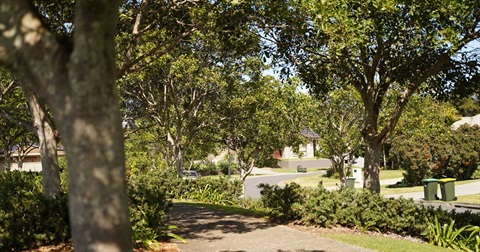Trees and urban heat

Trees in urban environments provide shade, mental health benefits, reduce risks of heat-related illness, store carbon and add value to property and public spaces.
Our goal for the Cool Towns Urban Forest program is to increase the amount and quality of tree canopy in urban areas of the Tweed – to provide shade and cooling for the places people live, work and play.
Suggest a new tree planting
 (JPG, 179KB)
(JPG, 179KB)
Summary of the broad array of benefits trees provide.
You can request a tree to be planted on the verge outside your property. Planting usually occurs during winter months to support the establishment and survival of the tree.
Once you open the 'Report a problem - trees' form below, choose the 'Tree planting' option in the request type drop-down:
Request a tree on your verge
You can also request approval for additional landscaping in the verge, subject to guidelines to protect the amenity, access, safety and undergound services that may be present. The Guidelines for Road Reserve Vegetation in Urban Areas(PDF, 969KB) provide guidance on landscaping requirements.
You can also identify public places that would benefit from more trees, such as walkways, parks and recreational areas.
Where do we need more trees?
Urban heat
The ‘urban heat island effect’ is localised warming in urban areas due to:
- the large amounts of hard surfaces like paving or concrete, which more readily absorb and store heat when compared to vegetation
- the large amounts of heat-absorbing, solid dark-coloured surfaces like roads, large buildings or carparks
- human heat production (for example from car engines or air conditioners).
Urban areas create their own microclimates and become warmer than nearby regional areas, particularly at night. After a hot day, urban areas can be several degrees hotter than surrounding rural areas. This temperature increase impacts local flora and fauna, air quality and public health.
As climate change impacts are forecast to deliver more heatwaves (consecutive days over 30 degrees) and an increased overall number of hot days (number of days over 30 degrees), vegetation and trees are essential for reducing urban heat by:
- shading heat-absorbing surfaces like west-facing masonry walls, shading hard, dark surfaces, shading of windows and air conditioning units
- shading and transferring water from plants into the air contribute to cooling of the local environment
- providing shade over footpaths and pedestrian zones, reducing exposure to ultraviolet (UV) radiation, which can lead to skin cancers and public health issues
- providing shelter from the wind.